THE EASTERN LIGHT OF SPRING HAS ENTERED THE STUDIO!
March 24th, 2024, was the first day since October 2023 that the Eastern sunlight illuminated my studio. There is no direct sunlight in fall and winter. I get busy as the sun's arc moves through the studio, the formed oval mirrors are placed in its path, and the Lightbirdspring migration begins!
Above: The studies began with oval mirrors and stencils of bird wings animated with sunlight and a fan. Common Murres combine both birds and fish, and they paddle furiously diving for food, depleted by warming oceans.
JOIN OUR FREE WATCH PARTY!
Jim Campbell, the artist, engineer, and curator for the Salesforce Tower, invited me back this year to fly Lightbirds. The Lightbirds series is made of light reflected from mirrors. Lightbird reflections fly with sunlight during the day and, after sunset, fly with video projections for a nighttime migration.
Birds bring the good news of light and the renewal of spring. I’ve been asked to fly the Lightbirds for peace. As they soar with 80-foot wingspans, we feel their power to uplift and inspire.
The Salesforce Tower Flight of the Lightbirds is from 8 PM to 1 AM on March 26th and 27th,
so remember to look up!
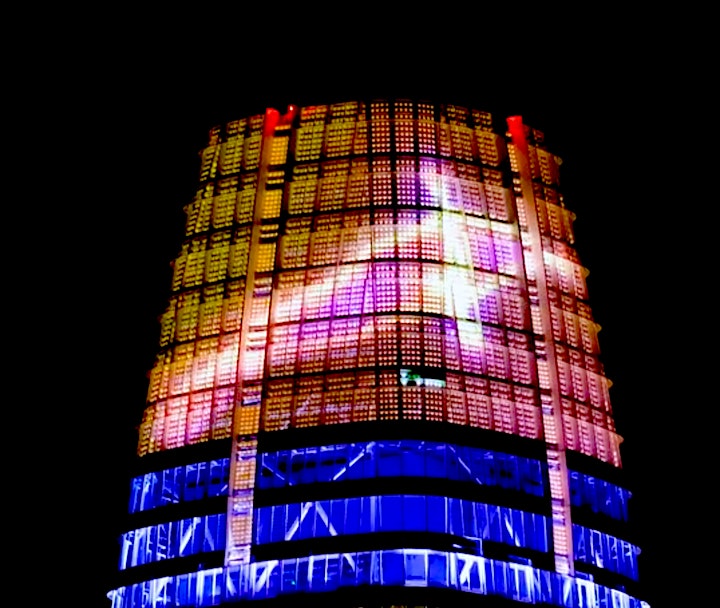
FREE Watch Party: Lightbirds soaring to the Salesforce Tower for the Spring Migration of birds.
Where: 275 Steuart Street, San Francisco, corner of Embarcadero and Howard.
When: March 26th, 7:30 - 9:30 PM
Why: San Francisco is part of the Pacific Flyway, where over 200 species of birds migrate, and to honor the many birds we have lost to warming oceans and other factors. And birds always bring good news!
Who: Light installation Artist Therese Lahaie, with generous support from Off The Grid and The East Cut organization for securing an ideal location for the community to gather and watch the Lightbirds soar (with 80' wing spans)
Ghost in the Machine - Curated by Twyla RubySeptember 8, 2023 — August 25, 2024DiRosa Center for Contemporary Art Working in the shadow of Silicon Valley at the close of the 20th century, Bay Area artists experimented with electronics, computing, and robotics to create artworks that prefigure our contemporary obsession with sentient machines. Revered Bay Area artists Sonya Rapoport, Bruce Cannon, Lynn Hershman Leeson, Alan Rath & Stephanie Syjuco, and artists nationally. |
| Breathing Lesson Large Ellipse, 2000, 24"h x 24"w x 6.5" d, slumped glass, silk organza, paintbrush, motor. Glass is used as a reflective and transmissive canvas; the shadows cast by the textured glass on the fabric scrim expand and contract. |
The Lightbirds are migrating to the DiRosa Center for Contemporary Art's new outdoor projection program. Opens May 2024
Cloudbirds: A video projection of clouds reflected from a formed mirror. 4’ h x 15’w wingspan. Cloudbirds intermingle and soar with 200 birds that migrate, making nests by the Dirosa Center pond and land.
The artist enjoying the sunset at DiRosa Center for Contemporary Art, Mar 24, 2024
Thank you, Twyla Ruby, for the tour of Ghost in the Machine. Photo: Rick Freeberg
Lightbirds Soar to Top 20 San Francisco Public Art Projects
CODAmagazine celebrates the public response to the scale, translucent colors,
and flight patterns of Salesforce Tower Lightbirds! (The magazine publisher CODAworx is an international hub for commissioned artwork.)
CODAsummit ART, TECHNOLOGY, & PLACE Conference
https://www.codaworx.com/
San Jose, CA. October 4-6, 2023
Jim Campbell had an early solo show 20 years ago at the San Jose Museum of Art. I was there, and his work was a revelation for me. Returning to San Jose and on stage with Jim and fellow skyline artists is a thrill.
On October 5th, our artist panel, Curating the Uncuratable, will address the curatorial considerations for this skyline screen, how the tower display works, and the challenges of designing imagery for it.
-
Moderator: Mark Domino – Founder, Spireworks
-
Jim Campbell – Light Artist, Engineer
-
Therese Lahaie – Light Installation Artist
-
Emma Strebel – Artist and Imagery Coordinator
Emeryville Celebration of the Arts
https://www.emeryarts.org/
October 7-29, 2023
Join me at the gala opening night on Friday, October 6, 6 – 9 p.m.
Our opening night benefits the youth art program!
Open 11 am - 6 pm, Wednesdays. - Sundays
Public Market Emeryville, 5905 Shellmound Street, Emeryville, CA
Jurors and Curatorial Statement
https://www.emeryarts.org/artists-k-r/therese-lahaie
Kinship with Birds in Flight and Plight
https://www.weadartists.org/exhibitions/
October 15, 2023 - January 31, 2023
WEAD - Women Eco Artist Dialog
At a time when birds around the world are facing challenges,WEAD invites artists to come forth with work
that celebrates conservation successes or signals the need for urgent interventions.
Juror: Jane Kim
Tinged: Eastern sun, hand-formed convex mirror reflection on the Western wall.
6.18.22_7:24AM Timelapse.
Lightbirds that fly with the orbiting of the earth around the sun
The City of Emeryville Visual Arts Grant
Join us in completing another captivating art installation. We are the Lightbird Project, dedicated to enlivening public and private spaces with mesmerizing Lightbird installations that connect us to nature and raise awareness about the impact of warming oceans on seabirds in Northern California.
Imagine the awe-inspiring sight of a sun-powered Lightbird with a 40-foot wingspan flying on a 200-foot wall in our Emeryville neighborhood. Thanks to a City of Emeryville Visual Arts grant, we have progressed toward our mission.
A 2022 -23 City of Emeryville Visual Arts Grant pairs local property owners, and artists will provide funds to install a Lightbird installation on an architectural scale. In the proposed project, a convex oval mirror 36" w x 24" mounted on the south side of one building and will reflect a Lightbird across the street on a 28’ x 200’ wall.
On average, the Bay Area has 291 sunny days each year, and the Lightbird flight will fly with the changing azimuth of the sun and weather conditions.
Existing plan and elevation view images
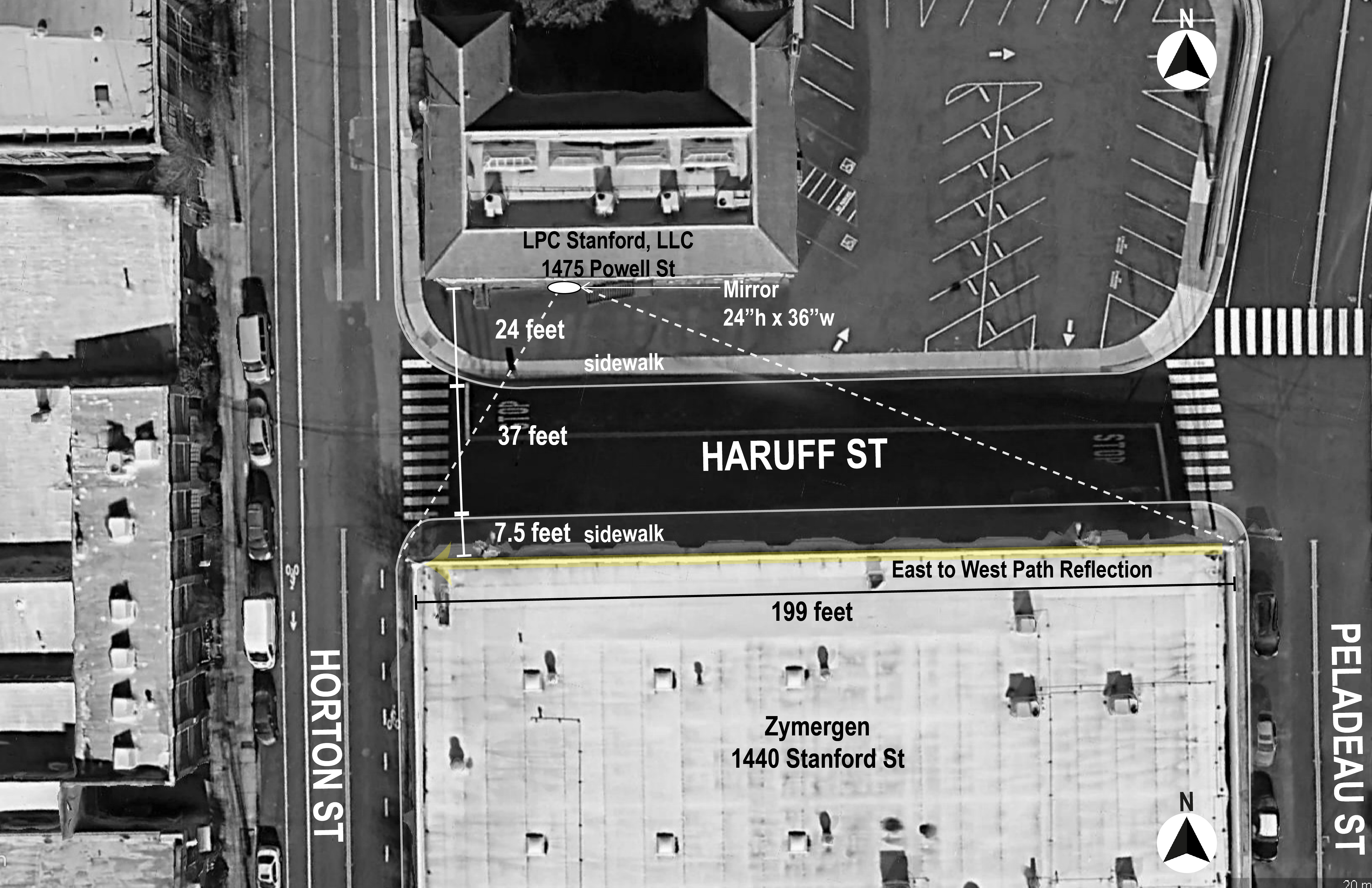

The City of Emeryville Visual Arts Grant Update 2023 -24
The City of Emeryville Visual Arts Grant pairs local property owners and artists to provide funds to install an unexpected Lightbat installation on an architectural scale. Watch our first test of a sun-powered Lightbat with a 30’ wing span; its reflection flies across a 200’ sky canvas wall across the street!
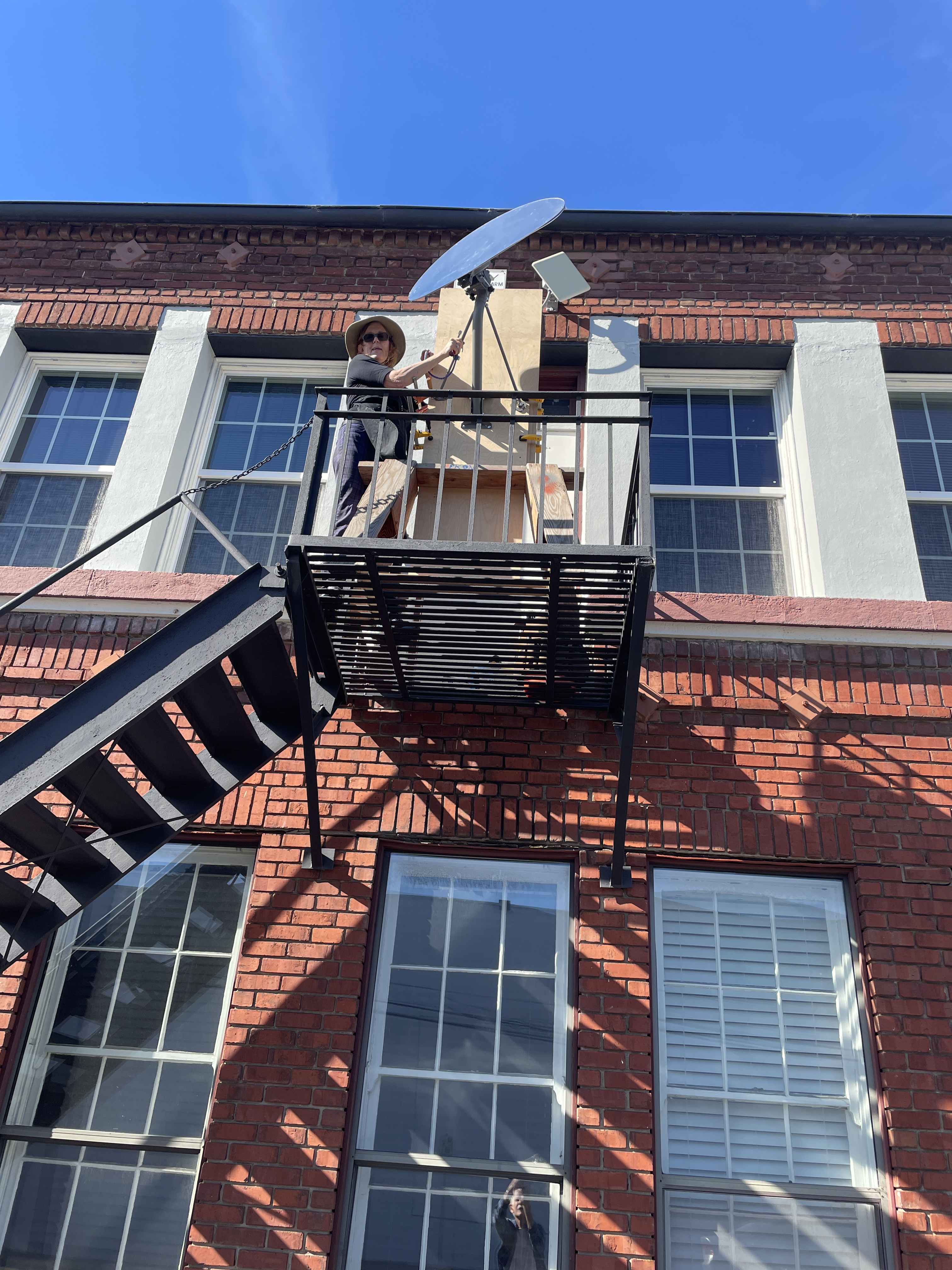

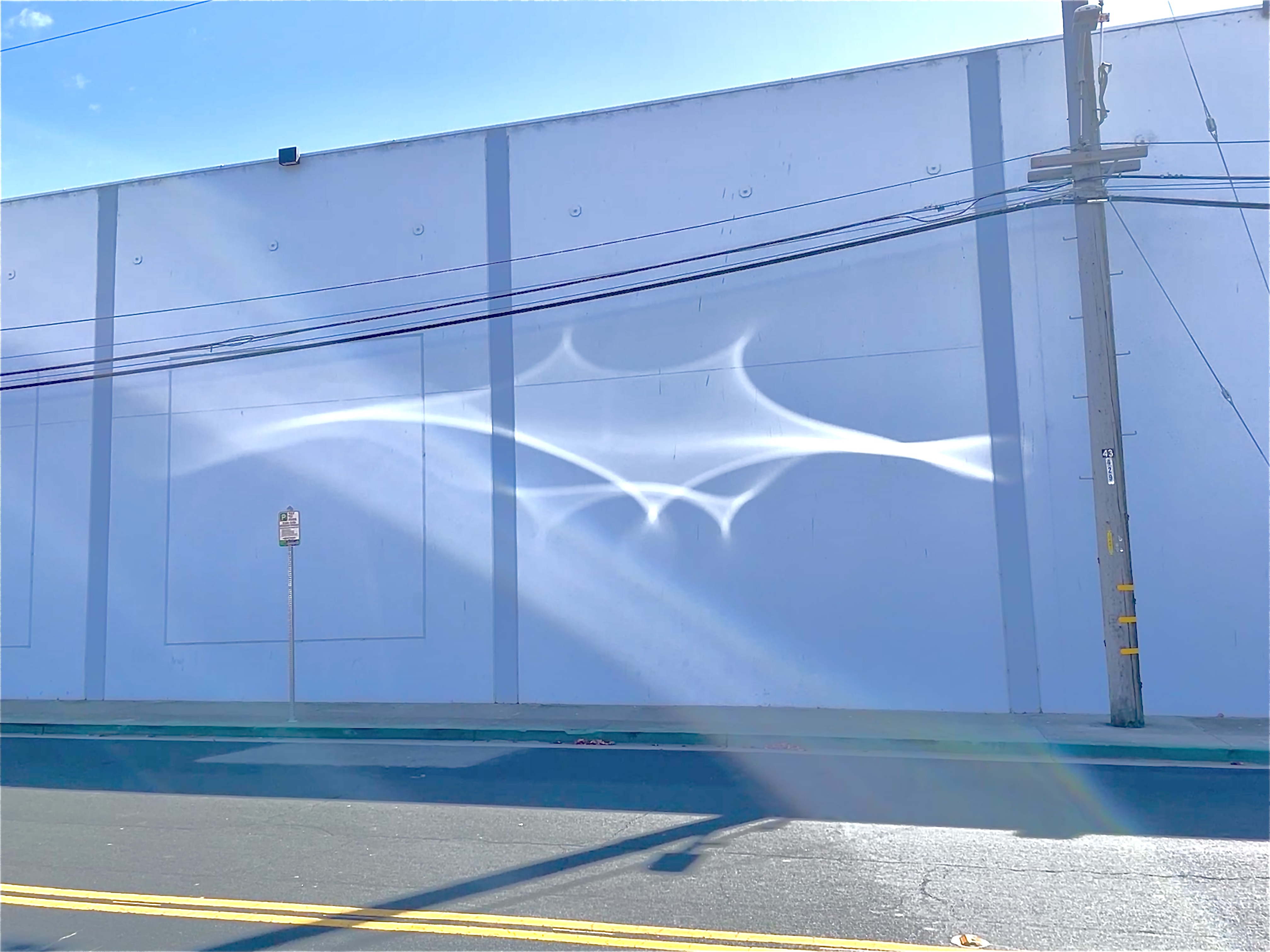
24” x 36” convex-formed mirror reflects the sun as a Lightbat flying its building wall sky canvas. The building that the mirror will be mounted to is on the left, and it reflects the Lightbird on the building across the street that flies with the arc of the sun, for the next during the 299 sunny days predicted for the following year
We need your support to complete the project. The grant provided seed money for our first exterior permanent installation, but we still require an additional $15,000 to cove the costs of fabricating and installing a permanent large-scale project.
Your contribution will help create a stunning visual experience that invites our urban community to look up from their cell phones and smile. Your donation, no matter the size, will make a difference.
To donate and become a part of the Lightbird Project, please visit our website or contact us directly.
Thank you for your support!
Please use the donate button below to make your tax-deductible contribution to this project or contact;
Thérèse Lahaie, at therese@thereselahaie.com
You can make a tax-deductible donation via paypal here.
If you prefer to contribute by cash, credit card or check, please contact Thérèse Lahaie, therese@thereselahaie.com
Emeryville Lightbird video mockup of Lightbird mirror projection of proposed project. The Lightbird project was cheered on by dozens of residents watching from their windows, pedestrians, motorists, and security guards. while testing the mock up included: We love it! When will the birds be back? They are beautiful and ephemeral! Where is the bird coming from? It's SO COOL! Keep flying! Look at that giant bird! Will there be a flock? Please
keep the birds flying!
Subscribe To My Mailing List
Skyline Artist Lightbirds "Soar" the SalesforceTower in Spring Migration
Lightbirds fly atop the SalesForceTower Art, brings attention to the Spring migration of bird species that travel the Pacific Flyway in San Francisco and those no longer with us. We hope that watching birds of light soaring lifts spirits in difficult times.
Watch the migration live April 1- 26 from 12 AM - 1 AM - see dates below expanded performances and watch parties.
We met with Jim Campbell for three live tests at 5th and Brannan in San Francisco.
Jim uploads our reels from the tailgate of his Volvo station wagon, and moments later,
the birds are flying on the Tower, and critiques commence.
My collaborator from Running Reel Films, Hahn Nguyen,
and I refined our content, contrast, scale, speed, and color palettes.
Hence, birds with forty-foot wingspans soar on updrafts bringing
calm and vibrancy to the San Francisco Bay Area.
Follow up on Instagram:
@thereselahaie @jimcampbellstudio @salesforcetower @bxpbostonproperties @runningreelfilms
SUPPORT FOR THE LIGHT BIRD PROJECT
Light installation artist Thérèse Lahaie is influenced by the tides and seabirds she sees as she swims in the San Francisco Bay. Employing sunlight and optical mirrors, her Sunbird reflections occur during the day, then shift after sunset to video projections with a second set of light patterns for a nighttime migration.
In addition to compelling art installations the “Lightbirds" are also a call to action for protecting seabird habitats and the impact of warming oceans on birds. This series began to bring recognition to half a million Common Murres, diving sea birds that we have lost since 2015 due to warming oceans on the Northwest US & Canadian Coast. The shapes of the sun's reflected light are reminiscent of birds and fish, as Murres can dive hundreds of feet deep to feed.
Lightbird installations have been temporary pop-up events and semi-permanent installations to date. The current mission is to grow the migration of Lightbirds to interior and exterior public and private spaces. This goal requires raising funds for engineering the technically formed mirror optics in acrylic and mirrored stainless for wall and pole mounting for architectural scale installations. The goal is to use these formed mirrors to reflect Lightbirds with 20’ - 60’ wing spans that fly with the sun on building walls, and to do so. Our goal is to raise $50,000.
The Salesforce Tower Lightbird installation is my biggest canvas for Bay Area audiences, and please keep the Lightbirds soaring by supporting our mission.
In addition to compelling art installations the “Lightbirds" are also a call to action for protecting seabird habitats and the impact of warming oceans on birds. This series began to bring recognition to half a million Common Murres, diving sea birds that we have lost since 2015 due to warming oceans on the Northwest US & Canadian Coast. The shapes of the sun's reflected light are reminiscent of birds and fish, as Murres can dive hundreds of feet deep to feed.
Lightbird installations have been temporary pop-up events and semi-permanent installations to date. The current mission is to grow the migration of Lightbirds to interior and exterior public and private spaces. This goal requires raising funds for engineering the technically formed mirror optics in acrylic and mirrored stainless for wall and pole mounting for architectural scale installations. The goal is to use these formed mirrors to reflect Lightbirds with 20’ - 60’ wing spans that fly with the sun on building walls, and to do so. Our goal is to raise $50,000.
The Salesforce Tower Lightbird installation is my biggest canvas for Bay Area audiences, and please keep the Lightbirds soaring by supporting our mission.
Please use the donate button below to make your tax-deductible contribution to this project or contact;
Thérèse Lahaie, at therese@thereselahaie.com
Thérèse Lahaie, at therese@thereselahaie.com
You can make a tax-deductible donation via paypal here.
If you prefer to contribute by cash, credit card or check, please contact Thérèse Lahaie, therese@thereselahaie.com
You can watch Lightbirds flying here and please reach out with any questions about this public art project.
Thanks for your support!
Subscribe To My Mailing List
Lightbird Sun, Screens, Video
The Lightbird Video Playlist
Look up, and glide with the Lightbird Video Playlist Take off with Lightbird drone footage of the Salesforce Tower
or daytime reflections on building walls with the sun's arc; when the sun sets, a nighttime flight begins with mesmerizing video projections.
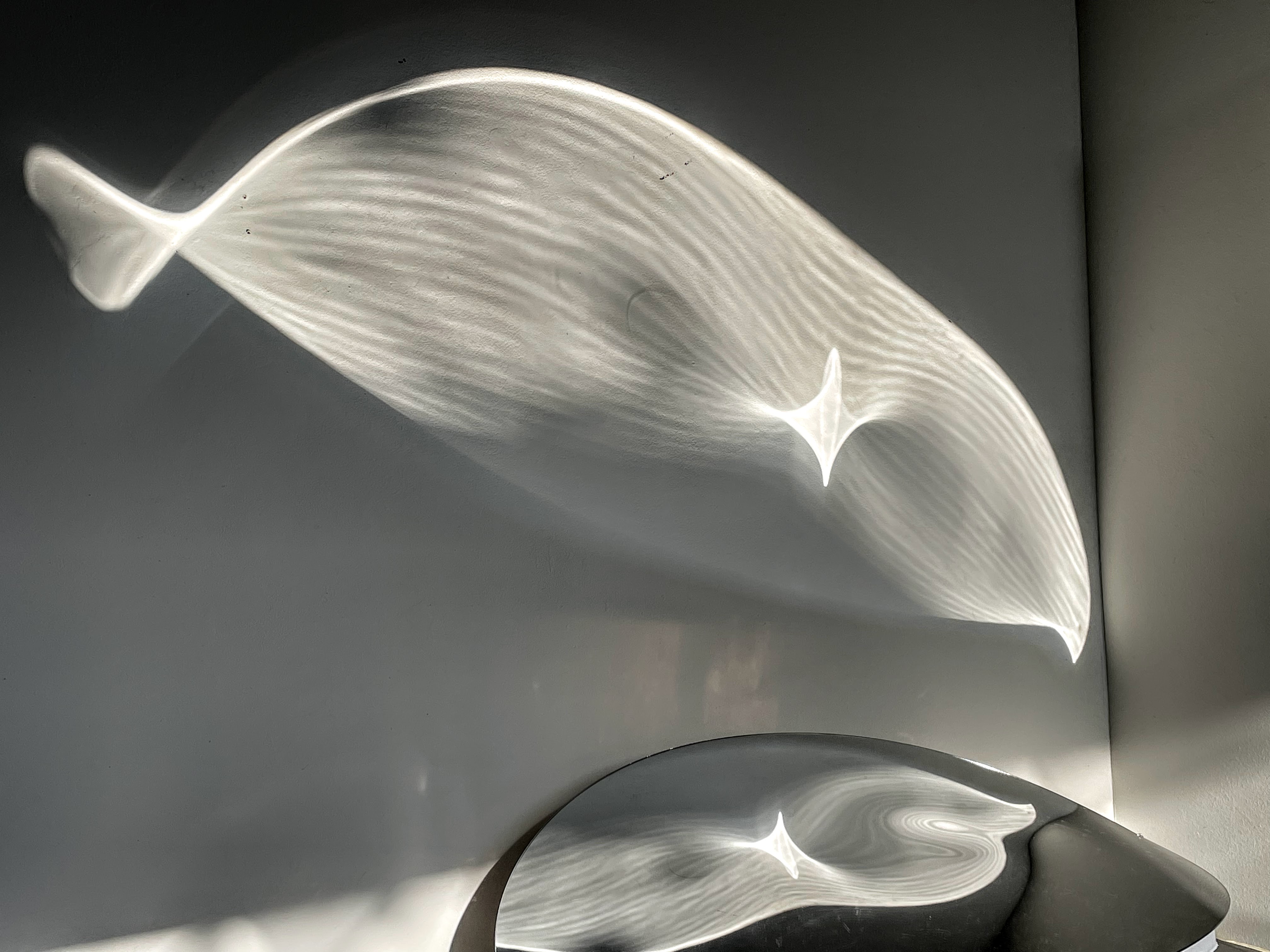
Outdoor Installations Sunbirds fly with sun reflections on an optical mirror; when the sun sets, video reflections send the lightbirds on a nighttime migration.

Interior Installations: Sunbirds Arise, Appear,
and Dissolve with the Movement of the Sun in Architectural Space. You can install them in different areas of your building, so they fly with the sun throughout the day. They can also be lit with electric lighting at night.
Listen to the story of the Sunbirds flying with the arc of the sun, guest lecture at Leonardo Art and Science Rendezvous, January 18, 2023
Subscribe To My Mailing List
About Skyline Artist Sales Force Tower Art!Sunbird Prints
Using the sun's movement to generate shadows and silhouettes, I am currently etching with light and line on an architectural scale. These studies, both time-based and static, move in three dimensions. The drawings on the glass reflect and transmit light to combine with line and texture.
These images are of assemblages of projected light, drawing on glass, photograms, and scoured mirrors
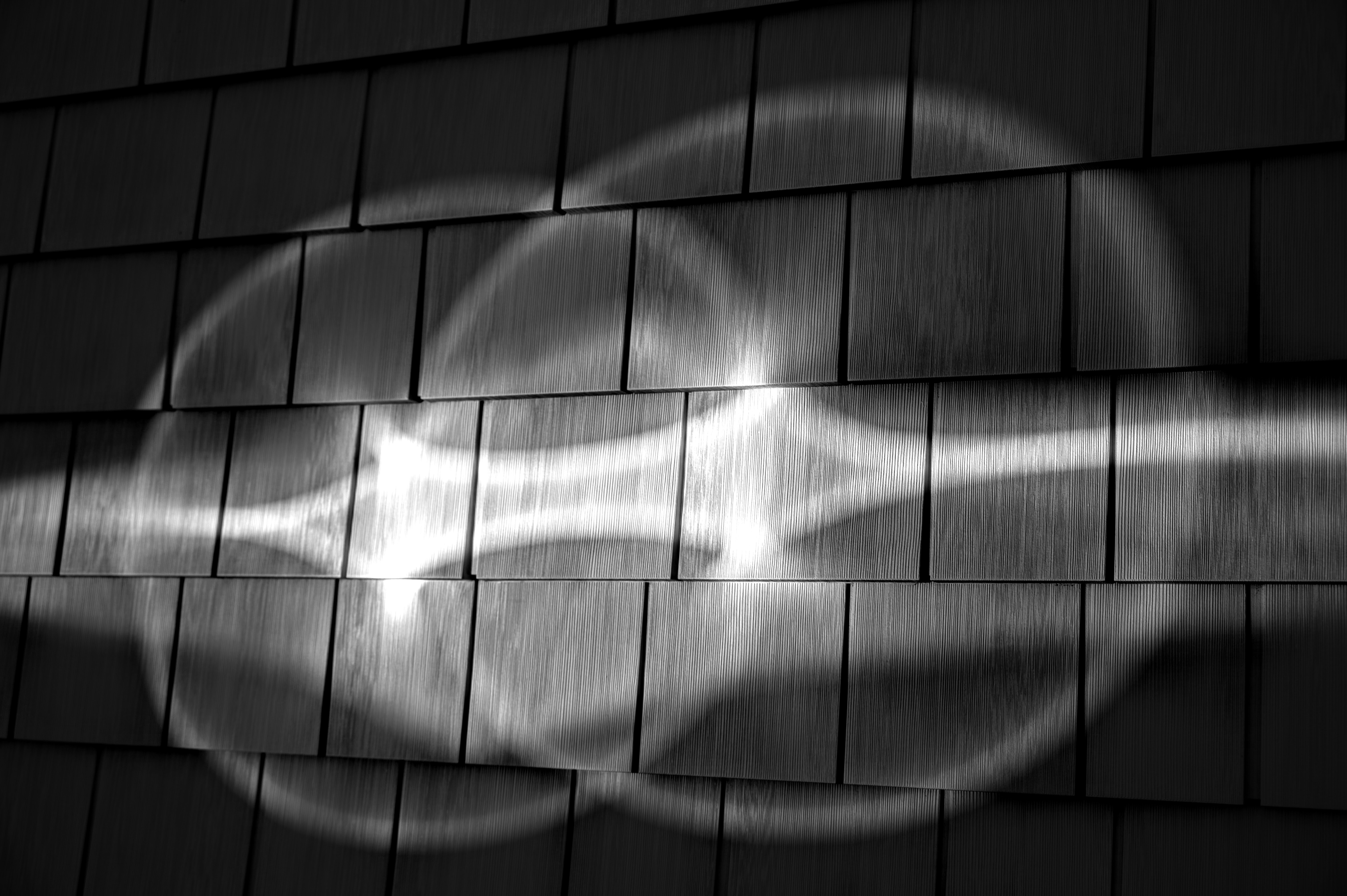
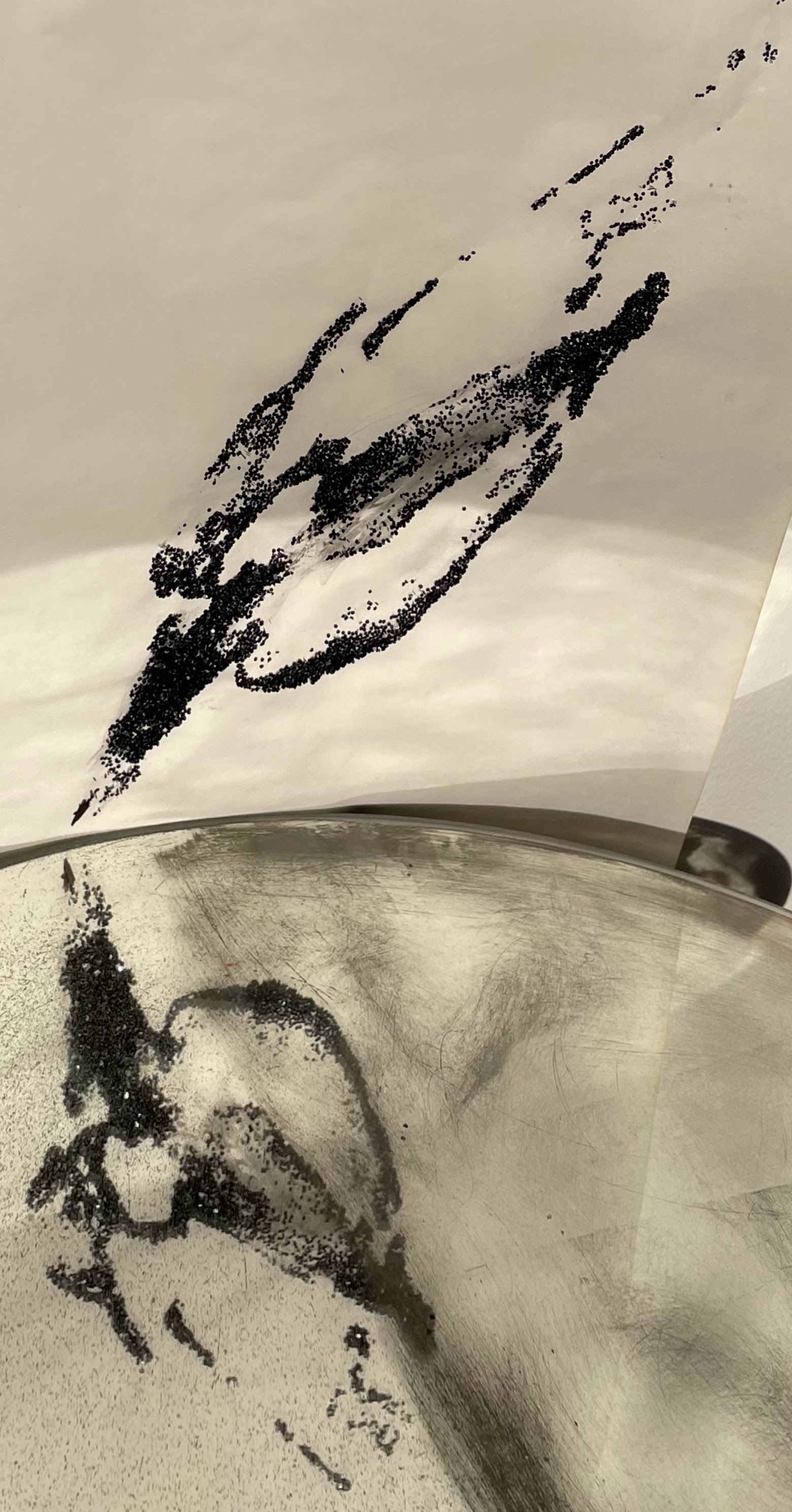
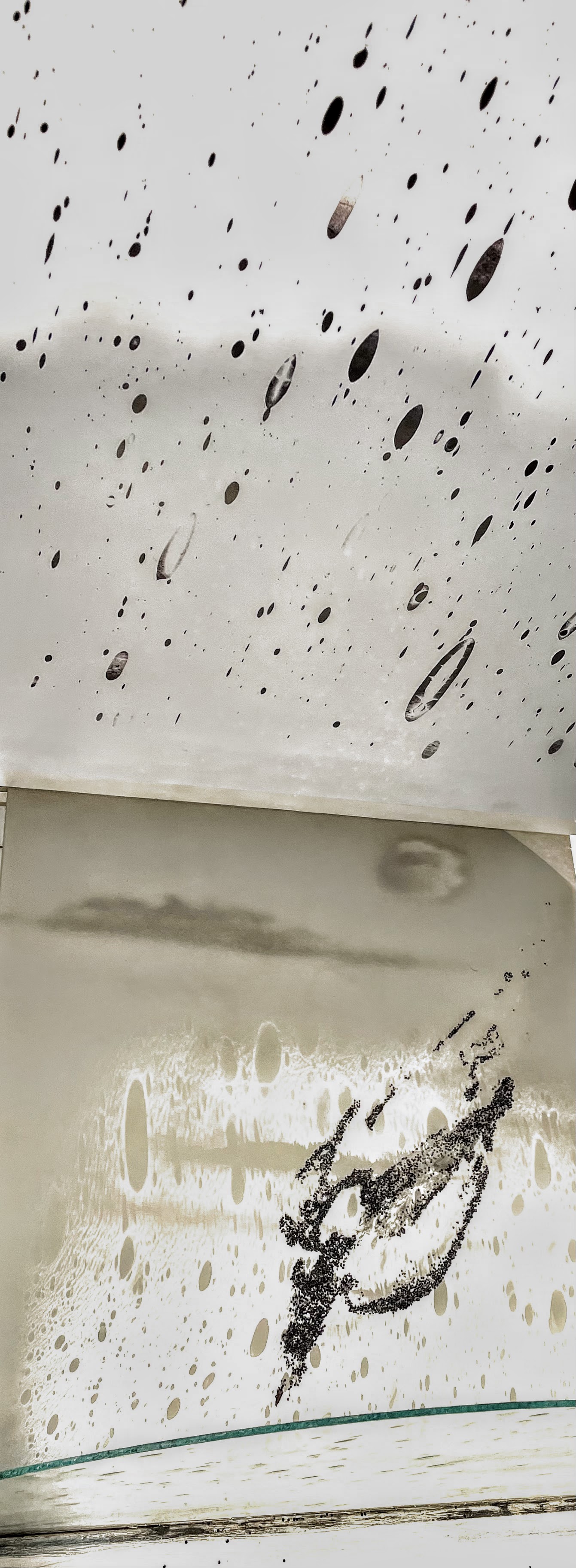
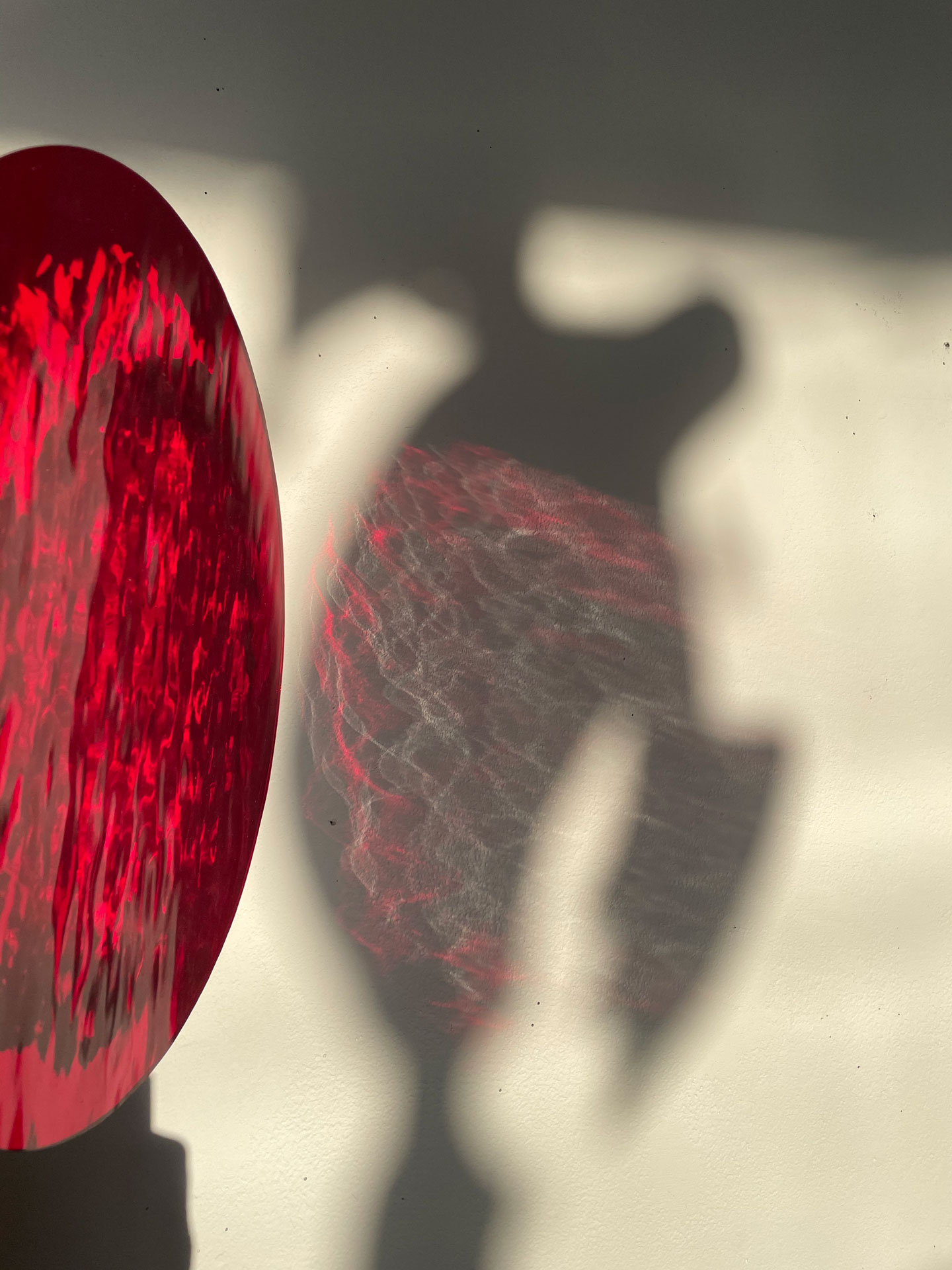
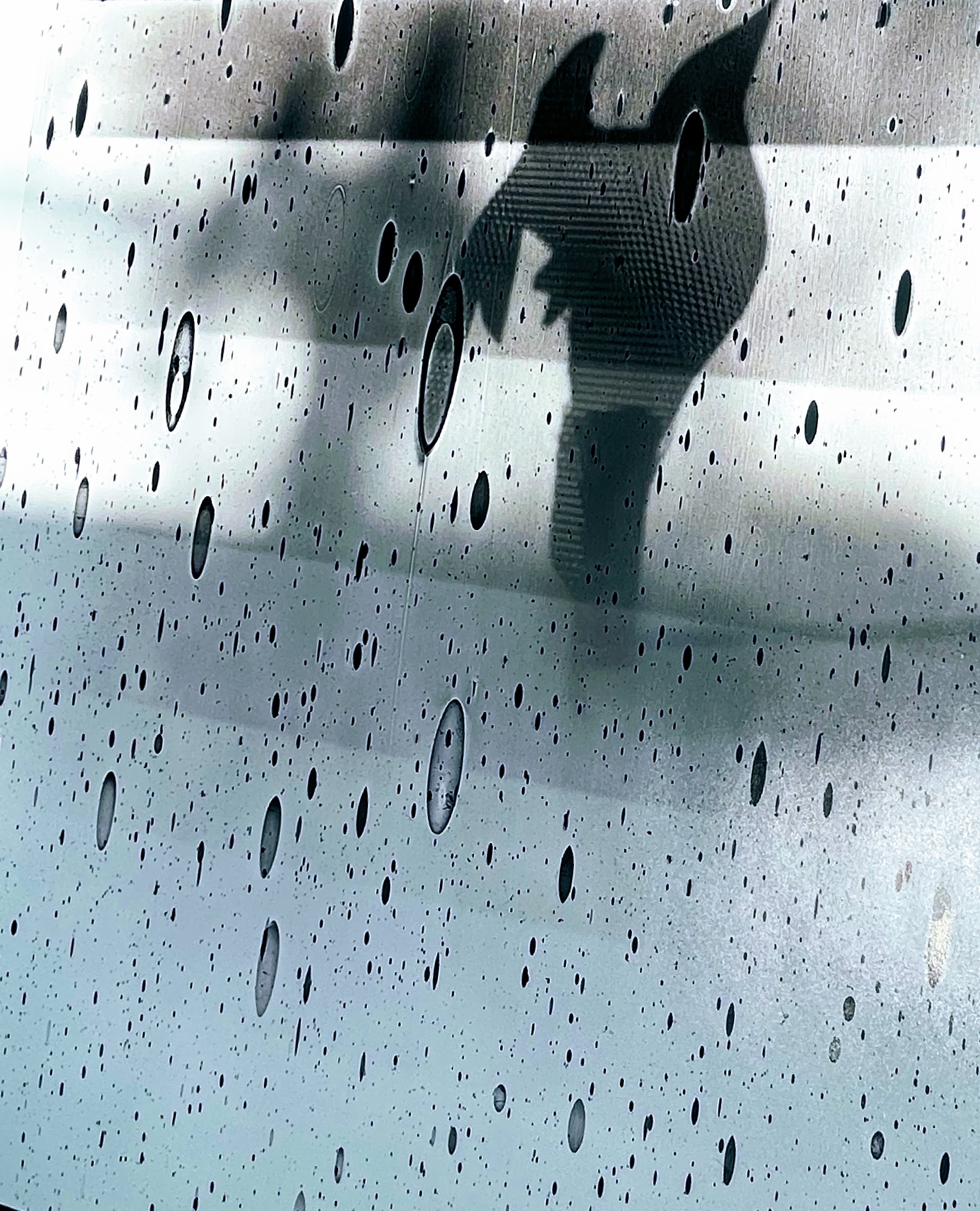



Subscribe To My Mailing List
About Skyline Artist Sales Force Tower Art!The Fountainel Series
Images from the Fountainel Series, described as mysterious, suggest something biological, a bony structure or a multicolored blowup of DNA. There are also suggestions of mandalas, neural pathways, waterways, and fascia, referencing the networks that connect us.
The image is based on a Tibetan purification practice in which light enters and fills the body to cleanse mental and physical obstacles.
A sampling of artwork in the Fountainel series. Fountainel Mandala incorporates programmable light whose changing colors move in a dynamic stream, filling, fading, and emptying in a cyclical rhythm.
The image is based on a Tibetan purification practice in which light enters and fills the body to cleanse mental and physical obstacles.
A sampling of artwork in the Fountainel series. Fountainel Mandala incorporates programmable light whose changing colors move in a dynamic stream, filling, fading, and emptying in a cyclical rhythm.
Illustration of Fountainel Channel on an architectural scale
Fountainel Channel,
20’ h x 40” w x 3” d,
pigment print on acrylic, LED
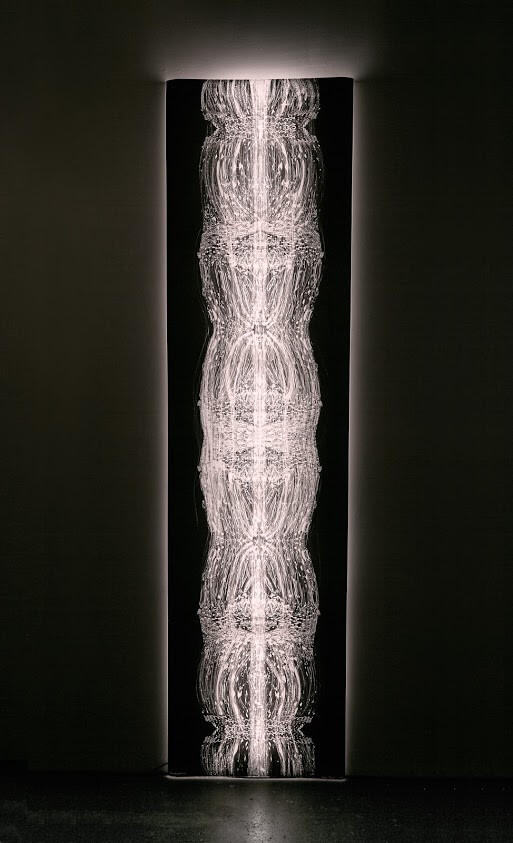
Fountainel Channel, 2017
Pigment Print on film, LED Lighting
9’ h x 29” w x 2.5” d

Fountainel Mandala, 2018
Pigment Print on film, Programmed LED lighting,
9’ h x 29” w x 2.5” d
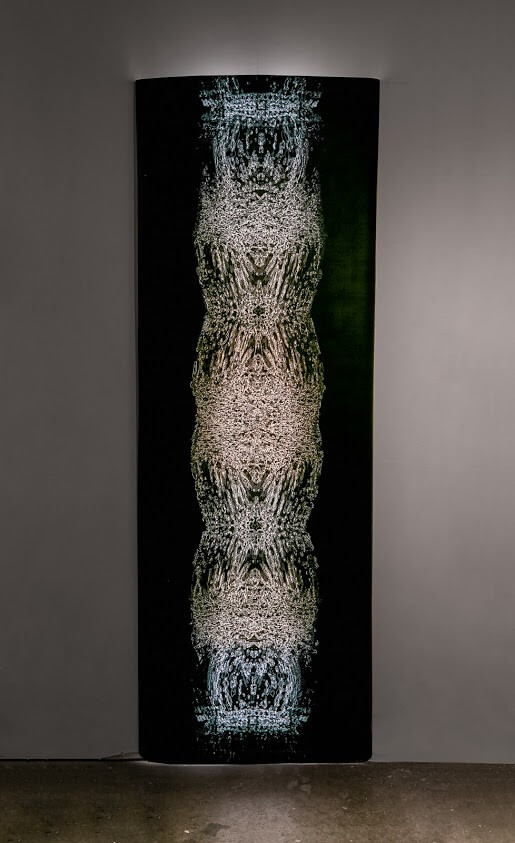
Fountainel Indra’s Net, 2018
Pigment Print on film, LED Lighting,
9’ h x 29” w x 2.5”

Fountainel Indra Bold, 2018
Pigment Print on Fabric, LED Lighting,
9’ h x 29”